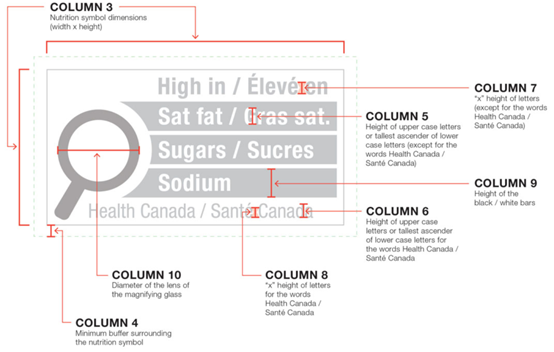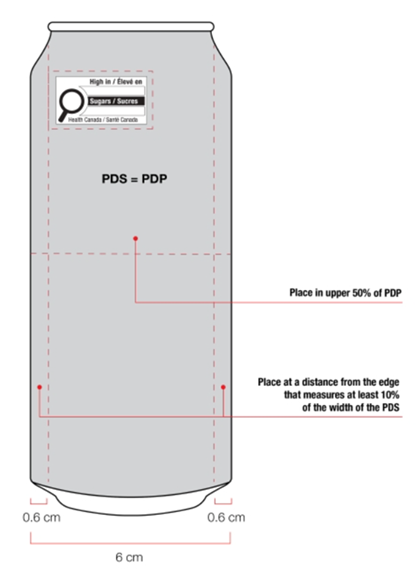On July 20, 2022, the Canada Government issued an announcement to amend the Food and Drug Regulations, newly adding marking requirements for "nutrition labeling". The new provision came into effect on July 20, 2022, with a transition period ending on December 31, 2025. Antion made a simple combing and interpretation of the relevant marking requirements of "nutrition labeling", and the details are as follows:
01 Purpose of "nutrition labeling"
Since high consumption of saturated fat, sugar and sodium is associated with obesity and high blood pressure, which can lead to chronic diseases such as heart disease, stroke and type 2 diabetes, Health Canada requires a "nutrition labeling" on the front of food packages high in saturated fat, sugar and sodium.
02 Marking requirements for "nutrition labeling"
When saturated fat, sugar and sodium in foods meet or exceed specified thresholds, a "nutrition labeling" is required. The threshold is the percentage of the daily intake of saturated fat, sugar and sodium (DV%).
In most cases, when the DV% of saturated fat, sugar and sodium in prepackaged foods reaches or exceeds 15%, a "nutrition labeling" is required, that is, "rich in saturated fat, sugar and sodium", "rich in sugar", etc. For other special cases, please refer to the summary of amendments.
In addition, "nutrition labeling" is a mandatory marking content.
03 Exemption from marking and prohibition of marking
The circumstances in which the "nutrition labeling" may be exempted:
1) Foods exempted from nutrition labeling;
2) Raw, single-ingredient ground meat or poultry;
3) Foods that are not directly provided to consumers in very small packages, such as small packages of single-cup creamer and mini chocolate bars;
4) Foods with recognized health protection benefits for the population as a whole or for vulnerable population, such as fresh, frozen, canned or dried whole or cut fruits and vegetables;
5) Foods containing nutrients that are not readily available in other foods. For example, most cheeses and yogurts made from dairy products contain calcium, and these foods are an important source of calcium intake for Canadians.
6) Foods prepared to meet the needs of specific population, such as military personal rations;
7) Foods providing sweet, such as sugar, honey and maple syrup.
For details of the above exemptions, please refer to the Industry Label Guidelines for Nutrition Labeling on the Front of Package.
The circumstances in which the "nutrition labeling" is prohibited: foods for special dietary uses such as infant formula and infant food.
04 Example of "nutrition labeling"
"Nutrition Labeling" are available in a variety of formats. The following is an example of the horizontal format:

Please refer to the Catalogue of Nutrition Labeling Specification for more formats.
05 Marking position of "nutrition labeling"
The "nutrition labeling" should be on the principal display panel of the package, for example:

06 Summary
The transition period of "nutrition labeling" will end on December 31, 2025, during which time, and relevant exporting enterprises need to adjust the labeling in a timely manner. For more requirements on "nutrition labeling", please refer to the Industry Label Guidelines for Nutrition Labeling on the Front of Package.
Source: Antion
Note: This article is compiled by Antion. Please indicate the source for reprint.